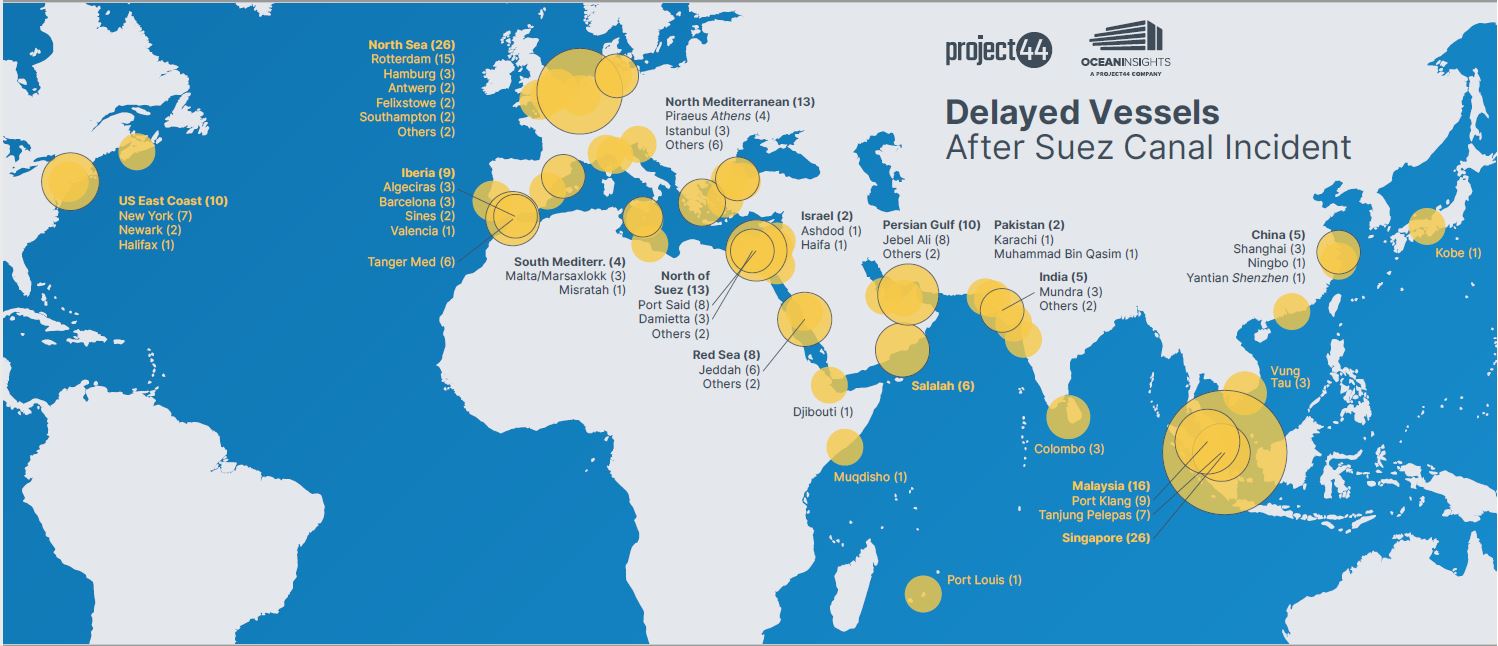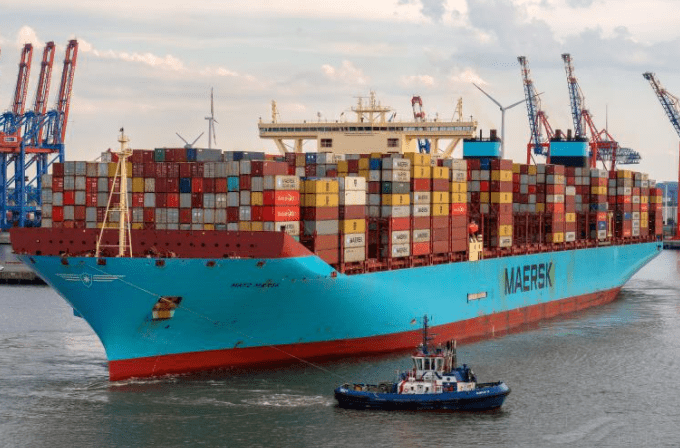More than 1.9 million TEU of capacity is currently on the water and heading to congested ports all over the world according to logistics information platform project44.
Following the Ever Given grounding in the Suez Canal at the end of March, up to 400 vessels, many of them container ships, heading both north and south were delayed by the blockage and are now arriving at the destinations at similar times, at ports which were already congested.
[s2If is_user_logged_in()]“With bottlenecked ships making their way to ports in the wake of the Suez Canal incident, cumulative delays for cargo ships are at 1,017 days, threatening to swamp ports with bottlenecked cargo for weeks to come. With more than 1.9 million TEU of capacity involved in the incident,” said project44, who is warning shippers that their headaches are not yet over.
According to project44 Singapore has more than 370,000TEU heading its way, with a further 83 vessels representing 299,310TEU already at the port or at anchor awaiting cargo handling as of 12 April.
A similar story can be seen in Rotterdam, where 15 ships aggregating 196,600TEU “will arrive over the next week, lining up behind 85 ships already at port or waiting to enter the port.”
Project44 said that other major facilities around the globe are bracing for an influx of volumes including New York, with 76,500TEU either having arrived or inbound from the Suez Canal incident; Port Kelang, at 103,900TEU; and Jebel Ali, at 75,879TEU.
“The influx of ships will also exacerbate port delays measured in days. With delays on major trade routes like Shanghai — Rotterdam already close to the one-week mark —a worrying increase over 2020, when median port delays on the same route were 2.79 days,” said the company.
Suez Canal traffic accounts for approximately 12% of global trade and the potential for disruption is significant at ports as far apart as New York and Shanghai.
Trade route delays that are expected to be substantially affected are Shanghai — New York, where the median March delay was 8.05 days (up from 1.09 days in March 2020); Shenzhen — Hamburg, where median delays last month were 9.23 days (up from 3.52 days in March 2020); and Shenzen — Newark-Elisabeth, where median delays reached 12.92 in March (up from 0.29 days in March 2020).
“The Suez Canal incident brings home the message that shippers must be prepared for unexpected disruptions in their supply chain. With real-time visibility and advanced alerting capabilities, disruptions as well as the ability to form strategies to avoid them, are more manageable than ever before,” said Josh Brazil, VP marketing, project44.

[/s2If]
[s2If !is_user_logged_in()]Please login or register to read the rest of the story[/s2If]







